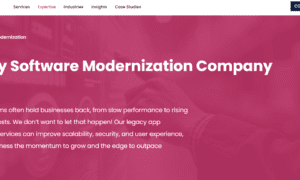Data is growing at rates we can’t really fathom. The good news is that new, AI and ML-powered tools mean we can actually do more with this data than ever before – that is, if you know you have the data in the first place. Shadow data, which refers to information you own but aren’t aware of, is becoming an increasing problem for businesses and their digital security.
Think of it this way. In 2024, we created 149 zettabytes. That number is expected to increase to more than 394 zettabytes by 2028. 1 zettabyte? That’s 1 trillion gigabytes.
That is an incomprehensible amount of information. The good news is you don’t have to sort through it yourself. Instead, use these steps to sort and secure your company’s sensitive information.
Step One: Identify All Data Stores
Automated tools can do wonders, but they can’t work with what they don’t have access to. This is possibly the most manual step you’ll need to go through, so be thorough. Create a list of all data-stores. These could be cloud-based, on-premises, or even in legacy systems. The list of databases, hard drives, and other data stores is going to impact which tool you use next.
Step Two: Find the Right Security Posture Management Solution
Security posture refers to the overall defensive strength of your IT infrastructure, and there are a few management tools out there for you. When it comes to managing and securing your data, for example, you’ll want a DSPM security system. This tool offers continuous, agentless discovery of your data. This allows you to locate shadow data and bring it to the light.
Step Three: Have Your DSPM Inventorize Your Data
DPSM works to immediately find unnecessary or unused data that you can then either delete or merge to streamline your cloud storage (and costs). It even works to automatically classify the data it sorts, allowing you to easily start encrypting and securing the most sensitive datasets.You can also use tokenisation, which replaces sensitive data with tokens, unique, non-sensitive identifiers that make sense to you but not to anyone else.
Step Four: Implement Simple Digital Security Practices
One of the easiest ways to protect your data is to limit access. Now, the DSPM can help with this, but ultimately, you will need to create a hierarchy of your employees. Only when the software understands who needs access to what kind of information can it more effectively help you remove unneeded access without interrupting workflows. You can also use tokenisation, which replaces sensitive data with tokens, unique, non-sensitive identifiers that make sense to you but not to anyone else.
Step Five: Ongoing Monitoring
The beauty of having a digital system sorting, classifying, and monitoring your data framework is that it can work around the clock. This does not mean you can just set it and let it go. While AI and ML tools can absolutely get better and better at what they do, they can also get worse if you don’t keep them in check. Regularly reviewing the results and fixing any issues can help the machine learning systems adapt and improve with time.



































